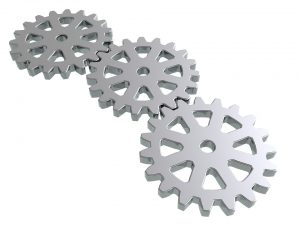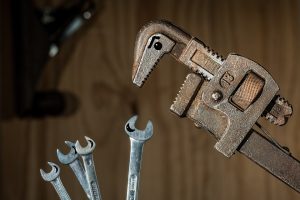
Blog
The Significant and Often Neglected Link Between Attitude and Behavior

As a member of the scout troop during my early teenage years, community service was an important component  of our yearly activities. I have to admit, however, that some of the activities were not the type of activities I looked forward to.
of our yearly activities. I have to admit, however, that some of the activities were not the type of activities I looked forward to.
One example that stands out was when the scouts made the decision to cut the bush and weeds that were becoming out of control at a high-traffic intersection within my community. I remember feeling hesitant (coming from a middle-class home), thinking that I was above this. I really wanted to be a part of this scout troop but I was thinking, “what if one of my ‘status-conscious’ friends saw me cutting grass at the side of the road?” “How could I hide and do this?” I remembered feeling so concerned about what people would think or say. Why couldn’t I just stand up, be proud and say ”this is what we do!!” After all, I really enjoyed being a scout, and activities like these were a part of what I signed up for. I certainly had the ability to do the job and I behaved like they wanted me to, but my attitude wasn’t where it should be. As time went by, I began to accept that this is what we do but it wasn’t just about seeing the value in it, it was about realizing and addressing the downfalls in my own character.
LINKING ATTITUDE AND BEHAVIOUR
Attitude and behavior are two quite different things. Attitude revolves around our thoughts and feelings, while behaviour is an outward expression of that attitude, in other words, it is what others see. However, the two are not always related because while attitudes can have a powerful effect on behavior, they don’t always match. People may have a positive attitude towards, exercising and eating right, but they don’t do it in practice.
Researchers have discovered that people are more likely to behave according to their attitudes under certain conditions:
 When your attitudes are the result of personal experience.
When your attitudes are the result of personal experience.- When you are an expert in the subject.
- When you expect a favorable outcome.
- When the attitudes are repeatedly expressed.
- When you stand to win or lose something due to the issue.
The first 4 conditions suggest that abilities, experience, and your level of optimism will help your attitude to be in the right place. Skills and knowledge will determine your ability. In effect, you are in a better position to have positive personal experiences because of your ability. What this eventually means is that your expertise in a particular area will lead to a higher expectation of a favorable outcome. If this becomes habitual, then your behavior will match your attitude.
Therefore, the first action we should consider here is to be good at what we do. Develop skills and knowledge. Regardless of what you think about your company, be good at your job. N.B. You may have to survive a background check and recommendation requests after you leave.
The 5th point aims at winning or losing, both of which have strong emotional impacts. This brings me to the difference between disruptive and evolutionary organizational change. Let’s face it, not everything is going to “pull” us. We, therefore, have to be helped along.
DISRUPTIVE CHANGE AND BEHAVIOUR
Order usually comes after chaos. As a result, threats to people or high-pressure mandates are disruptive changes that are still very popular. This is because they are quick and they work in the short term simply because they drive people into action. These techniques have their place, such as the police  using a monetary charge to enforce the seat belt law. I certainly learned the hard way, but it worked. However, this type of action can be abused if not used in the right way and for the right purpose.
using a monetary charge to enforce the seat belt law. I certainly learned the hard way, but it worked. However, this type of action can be abused if not used in the right way and for the right purpose.
Unfortunately, actions like high-pressure mandates can create low morale and may not become part of the culture as old behaviors eventually resume when the pressure to change is no longer there. It may also affect the quality of work. A crisis is also an example of a disruptive change that has a similar effect on people. Try setting your building on fire and watch everyone comply to “get the hell out!!!”
As a trainer, it becomes particularly challenging when leaders want a quick fix for behaviour change and they haven’t put basic systems in place to fix the “root” of their problem. Certainly, rewards can induce behavior change temporarily but one must always be wary of where rewards are used as employees may start depending on rewards to get things done. For those who insist on quick fixes for long-lasting behavior change, keep in mind that you are only treating symptoms. If you insist on the quick fix, DON’T CALL ME!! My suggestion is that you give Benny Hinn a call – I have heard that he performs “miracles”.
EVOLUTIONARY CHANGE AND BEHAVIOUR
Think about it!! If negative behavior has persisted in your organization for the last decade, you may want to think about the environment that created it. Fixing the “root” is an evolutionary change. It takes time. It involves using (not just having) the right hiring processes, the right Performance Assessments, and leaders who know how to develop and inspire people. These are evolutionary changes!!! I have written about this in previous blogs but I am repeating it here for good reason.
The change in my character (in the scout troop example) came through evolutionary change. With evolutionary change, it is highly likely that if the change is implemented, it will become part of the culture. It creates a better environment by establishing behaviors and standards and has beneficial long-term effects because more people have been involved in the design. Therefore, more people identify with the change.
These individuals have established a clear purpose, defined behaviours and activities that maintain them. The processes provide an environment where individuals can develop healthy habits and rituals, comfortably make choices and voluntarily adjust their actions to support both personal and professional goals.
Wrong behaviours happen in companies only because they are allowed to happen.
 Always remember that behavior is a choice. It is not uncontrolled behavior by individuals or that someone got possessed. Employees, at times, don’t understand the value of the “Big Picture” and are not held accountable. What do we end up with? A lack of commitment, frustration, loss of your best workers, and leaders having to do extra work because of the continued existence of negative behavior. The creation of the right environment is crucial and this comes not only from skills and knowledge but also from immediate conversations, ongoing conversations and processes that support them.
Always remember that behavior is a choice. It is not uncontrolled behavior by individuals or that someone got possessed. Employees, at times, don’t understand the value of the “Big Picture” and are not held accountable. What do we end up with? A lack of commitment, frustration, loss of your best workers, and leaders having to do extra work because of the continued existence of negative behavior. The creation of the right environment is crucial and this comes not only from skills and knowledge but also from immediate conversations, ongoing conversations and processes that support them.

Sources
American Psychological Association Attitudes and Behavior Change. http://www.apa.org/pi/aids/resources/education/attitude-change.aspx
Attitudes, Behavior, and Social Practice. Journal of Sociology and Social Welfare. March 2011. https://www.wmich.edu/hhs/newsletters_journals/jssw_institutional/individual_subscribers/38.1.Chaiklin.pdf
Tony  Ragoonanan is the Founder of V-Formation Training & Development. As a Trainer and Performance Management Specialist, he helps individuals, teams, and businesses to align behaviours and goals, create the right organizational culture and maximize capability. Outside of this, it’s all about family, football, and fitness!!
Ragoonanan is the Founder of V-Formation Training & Development. As a Trainer and Performance Management Specialist, he helps individuals, teams, and businesses to align behaviours and goals, create the right organizational culture and maximize capability. Outside of this, it’s all about family, football, and fitness!!
868-681-3492 | tonyr0909@gmail.com




Leave a reply